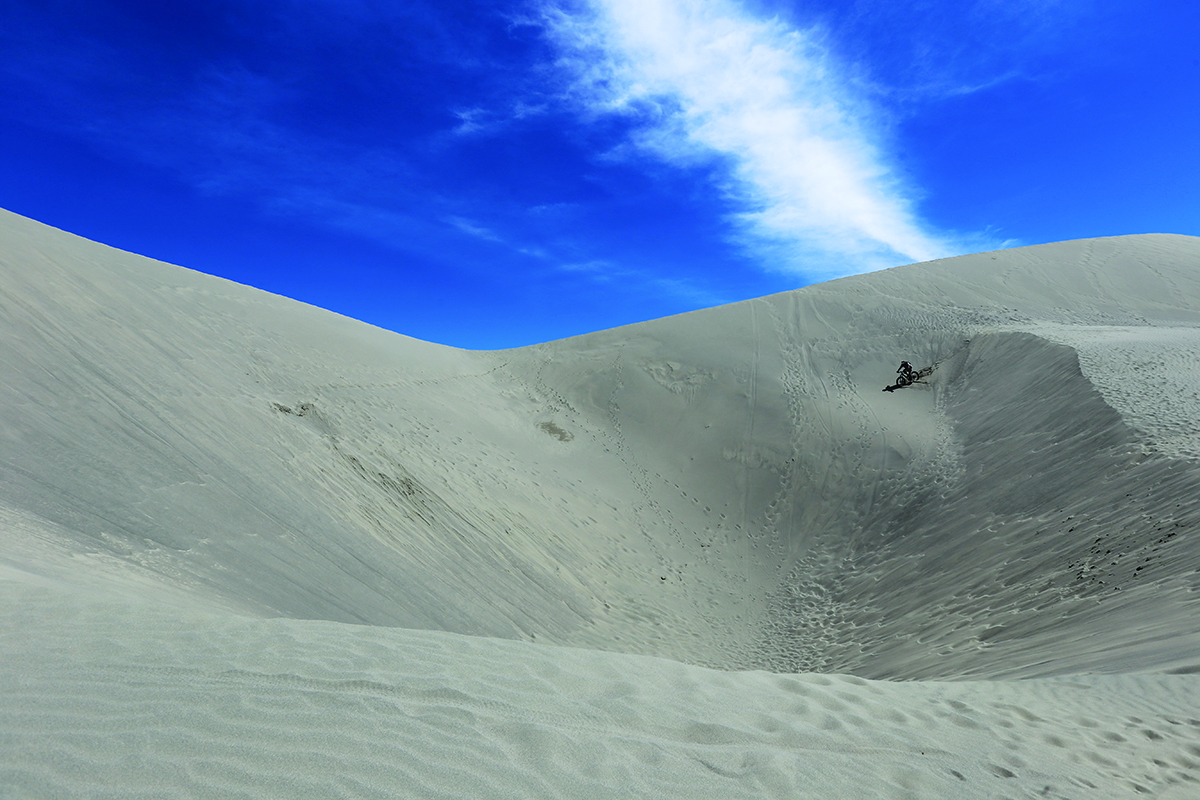You need to travel to the Bruneau Sand Dunes to grasp the enormity of its biggest namesake. A prehistoric monolith rising out of the Southwestern Idaho desert, the biggest dune there is almost 500 feet tall and looks like two mountains connected by a saddle, according to Assistant Park Manager Bryce Bealba.
It has stood the test of time: it’s the largest single-structured sand dune on the North American continent.
The main dune, and smaller dunes that surround it, are the main features that make up Bruneau Dunes State Park, 64 miles south of Boise. The 4,800-acre site also boasts two stocked lakes, campgrounds, cabins and an observatory. Visitors enjoy the park’s many amenities, which include hiking, fishing, horseback riding, camping, sandboarding and stargazing.
The dunes formed over 14,000 years ago during the Bonneville Flood. The flood is named for Lake Bonneville, an Ice Age-era lake in Northern Utah whose basin is now occupied by present-day Salt Lake. A broken ice dam sent a torrent of water through what is now Red Rock Canyon and carried sediment upstream into the Snake River Canyon. It tore through Eagle Cove, the valley the park is in, and “the valley served as a backwater eddy,” according to Bealba.
“As it came through, swirling, it released sediment and silt left behind,” he said.
Aerial views show the saddle is really shaped like a bowl. The shape relies on the northwestern and southeastern winds that blow across the plains, Bealba said. Like a potter, the regular winds torque and twist the dune into the multifaceted shape it has held for thousands of years.
A structure this old is hardy; visitors are welcome to hike up and down the dune, but no off-roading vehicles are allowed off the paved roads in the park. There’s also sandboarding; you can rent stand-up boards and sand sleds from the park office. Bealba said the smaller, 80-foot dune is most popular for boarders and sledders, since it’s easier to hike up. The park-supplied gear is waxed for maximum speed, just like a surfboard. Leave the cardboard “sleds” at home: while they might seem optimal for wet grassy hills, they “stick like mud” in the sand, Bealba said.
There are several other hiking trails in the park. Bealba cautions that hikers gear up for the desert conditions and lack of shade: bring sunscreen and plenty of water. It gets extremely hot by noon, and sand is difficult to walk on.
“We’ve already had a couple rescues this year,” Bealba said.
He added that the area also gets windy, and bug spray could be a good idea as well.
Wildlife is another attraction. Birders come from all over to watch ducks, geese, blue herons, birds of prey and songbirds, according to Bealba.
There are also two lakes in the park, both stocked with bluegill. The smaller, northern lake—popular with fly fishers—is also stocked with bass. Only electric and non-motorized boats are allowed on the lakes.
With cabins, campsites and equestrian facilities complete with corrals and water spigots, you could come for a while and bring the equine members of your family. They’re open year-round, with only some of the restrooms closed and the water spigots shut off in the winter. Snow doesn’t stick most winters, with this past year being a notable exception.
Come for the stargazing in the spring, summer and fall. There’s not much light pollution, and the park is in the process of getting “dark sky certified.” Look through the telescopes for an unadulterated look at the stars and cosmos.
It’s $5 a carload to spend a day (or a night or two) at the dunes, unless you’re a resident and paid $10 for the annual Idaho State Parks Passport that allows you park access statewide. The observatory is an additional charge, although the educational program before the viewings is free. Looking through the telescope costs $5 for most, $3 for seniors and free for kids under 5. You get a deal at $20 per family.
The dunes are just an hour’s drive from Boise; pack a picnic, hop in the car and bring a kite!

